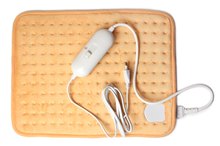Hot or Cold Treatments for Sciatica
According to MedlinePlus, a publication of the National Institutes of Health, sciatica refers to pain, weakness, numbness and tingling that occurs down the back of one or both legs after a spinal nerve is compressed 1. The common causes of sciatica include piriformis syndrome, a slipped disc, degenerative disc disease, spinal stenosis, a pelvic or back injury, or spinal tumors. In most cases, sciatica will improve with conservative treatments; however, in more severe cases surgery to correct the primary condition may be necessary.
Ice Pack
According to MayoClinic.com, applying an ice pack to the area of pain may provide adequate relief 2. Ice therapy may be effective because ice can reduce swelling around the nerve or swelling in structures that are compressing the sciatic nerve. Furthermore, ice numbs the back or leg over the area of pain. A patient should apply an ice pack for 20 minutes, then remove for 20 minutes, for multiple times throughout the day. He should not apply ice directly to the skin to avoid frostbite.
- According to MayoClinic.com, applying an ice pack to the area of pain may provide adequate relief 2.
Heat Pack
What Are the Treatments for a Pinched S1 Nerve?
Learn More
A heat pack may be effective in treating sciatic nerve pain states MayoClinic.com 2. A heat pack can relax tight muscles in the back or legs that may be compressing the sciatic nerve. Furthermore, a heat pack may provide a soothing relief to the area of pain that may take the patient’s mind off of the intense sciatic nerve pain. A heat pack should never be applied directly to the skin to avoid burn. The patient may use a heat pack as often as necessary throughout the day to relieve pain.
- A heat pack may be effective in treating sciatic nerve pain states MayoClinic.com 2.
- A heat pack can relax tight muscles in the back or legs that may be compressing the sciatic nerve.
Alternate Ice and Heat
Some patients may benefit from alternating ice and heat packs. For this type of therapy, a patient may start either with a cold pack for 20 minutes and then use a hot pack for 20 minutes, or he may apply the hot pack for 20 minutes and then replace it with the cold pack for 20 minutes. This method may offer more relief than ice or heat alone. The patient may alternate cold and heat treatments throughout the day as needed to relieve sciatic nerve pain.
- Some patients may benefit from alternating ice and heat packs.
- This method may offer more relief than ice or heat alone.
Related Articles
References
Writer Bio
As a physical medicine and rehabilitation physician I have extensive experience in musculoskeletal/neurological medicine that will benefit the network.









